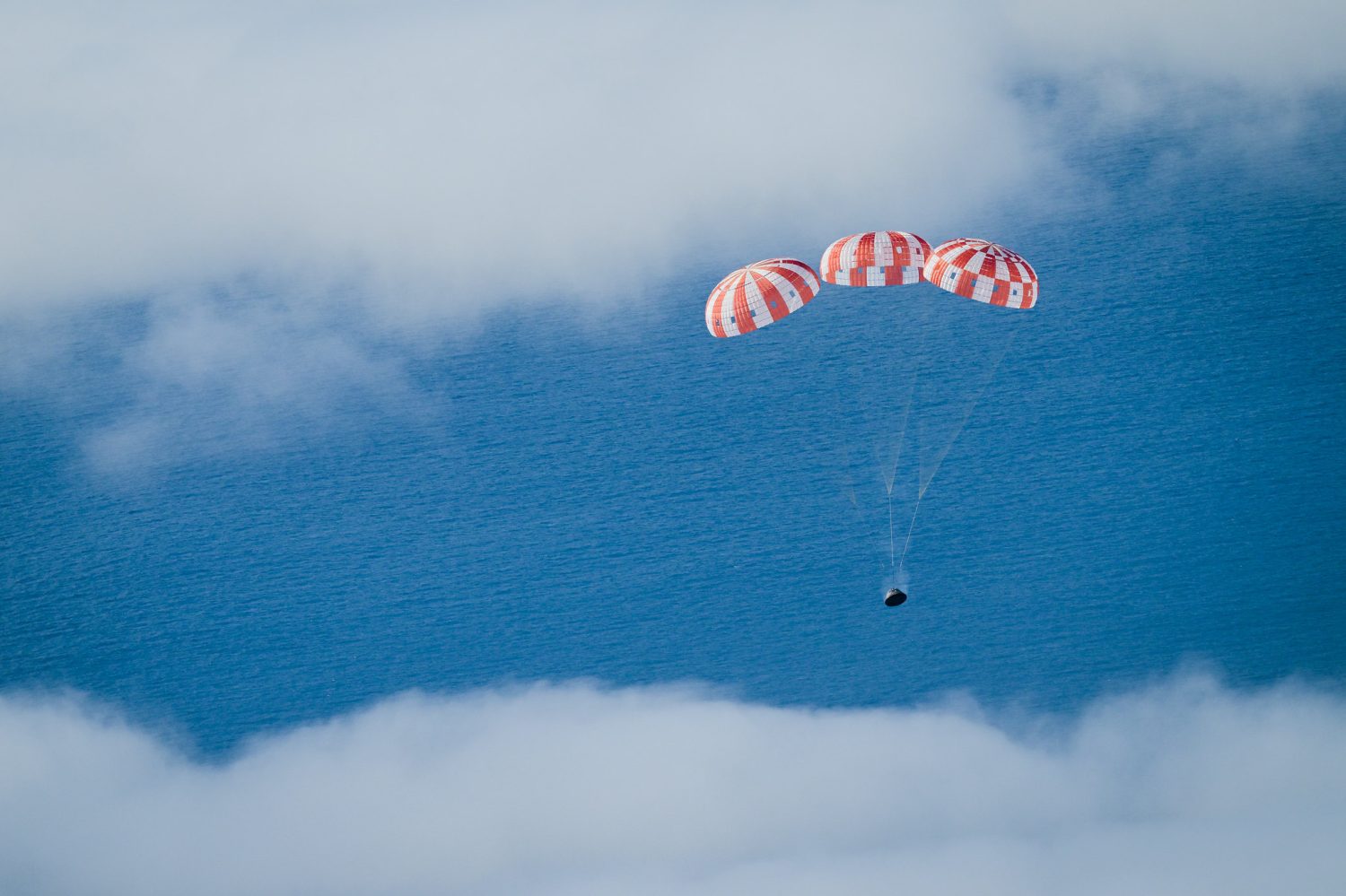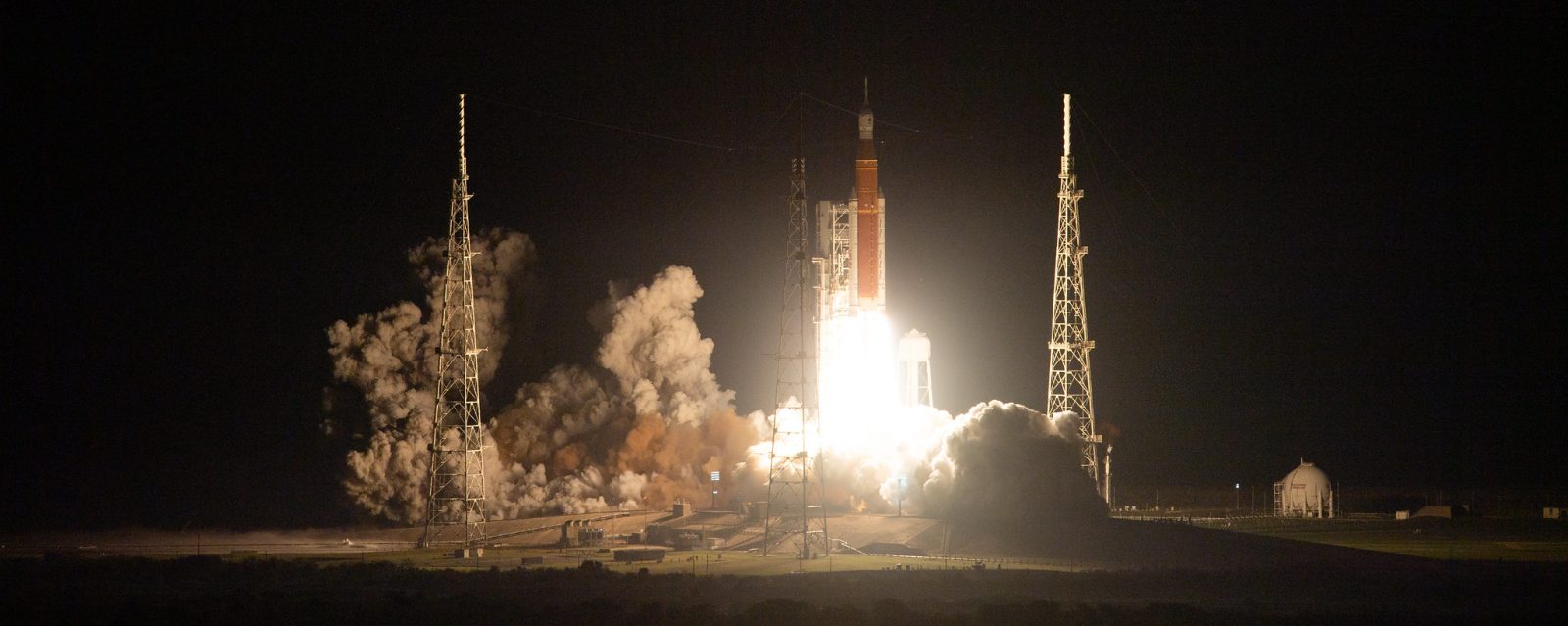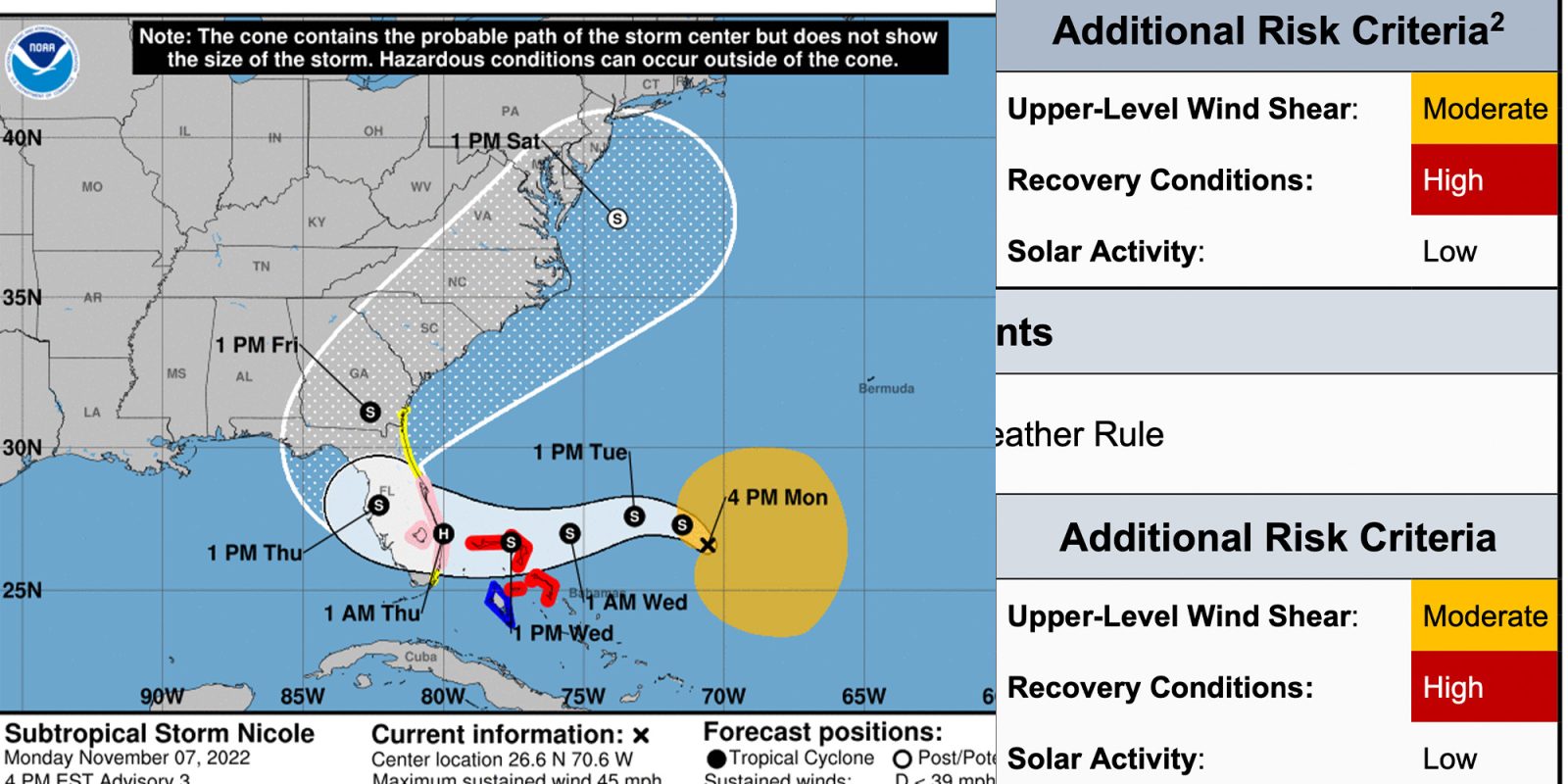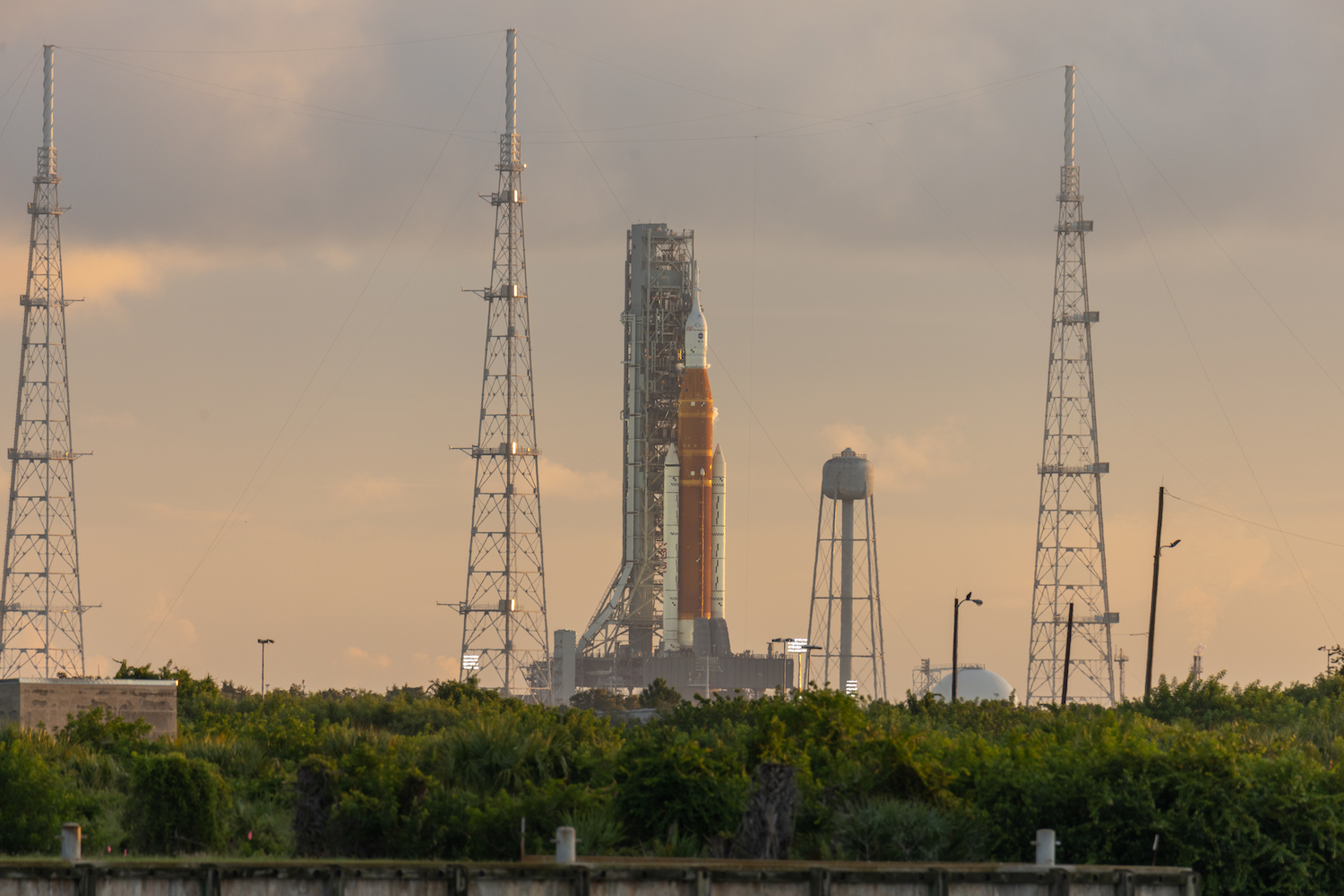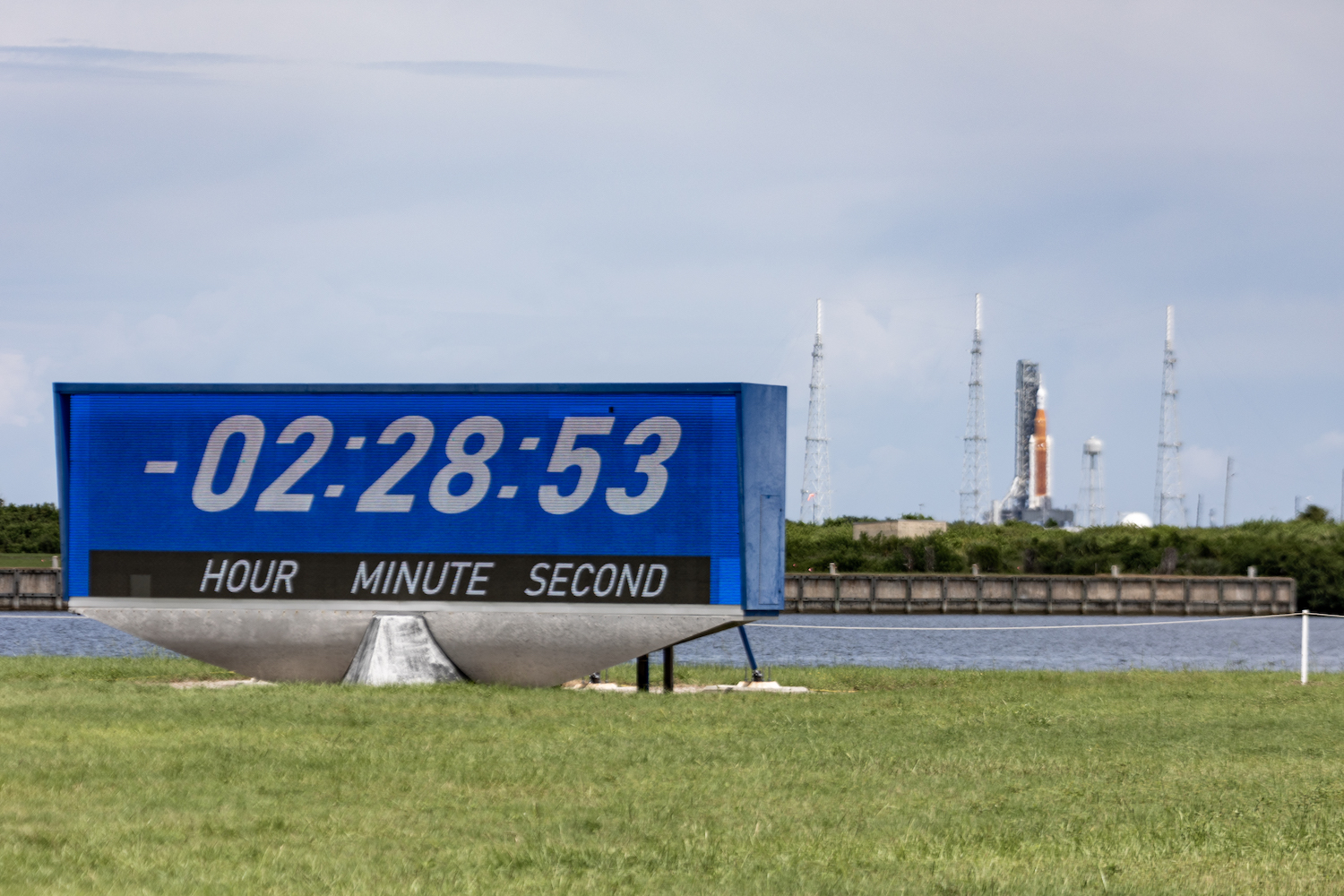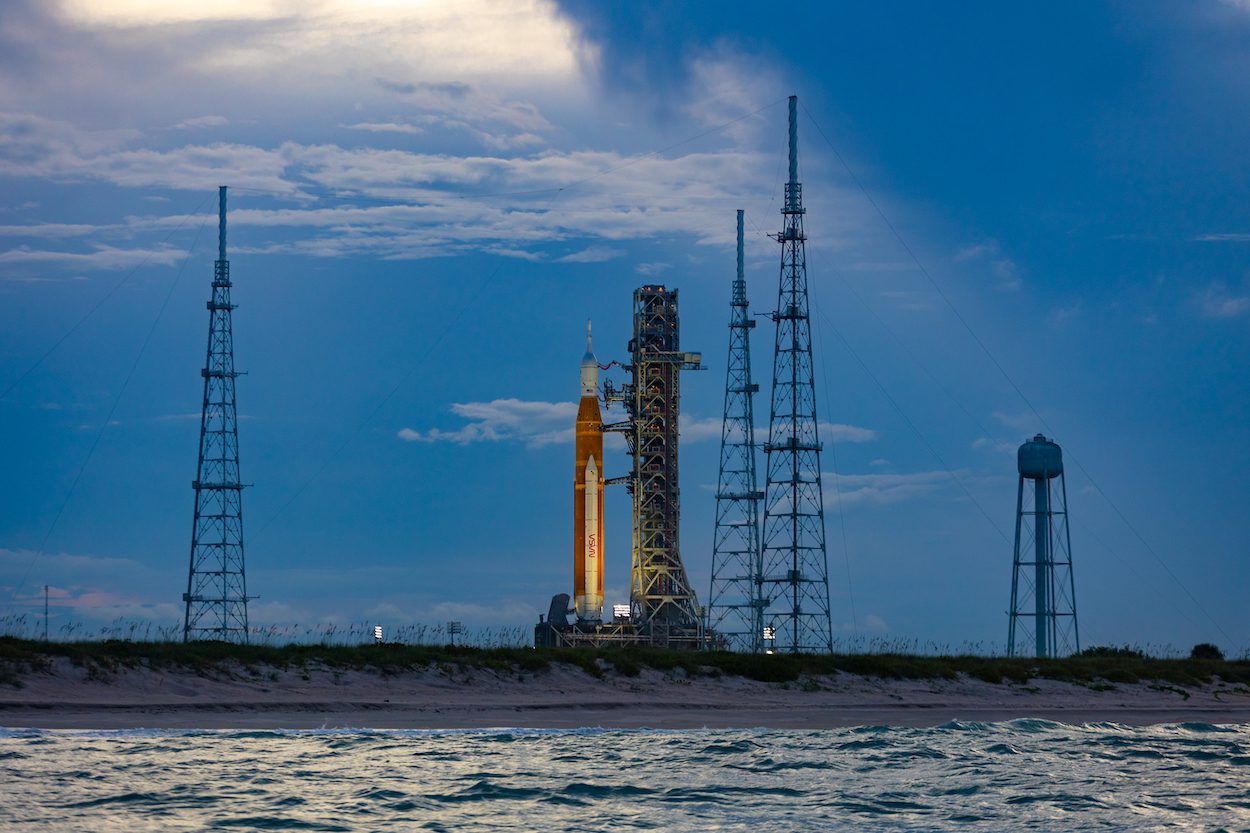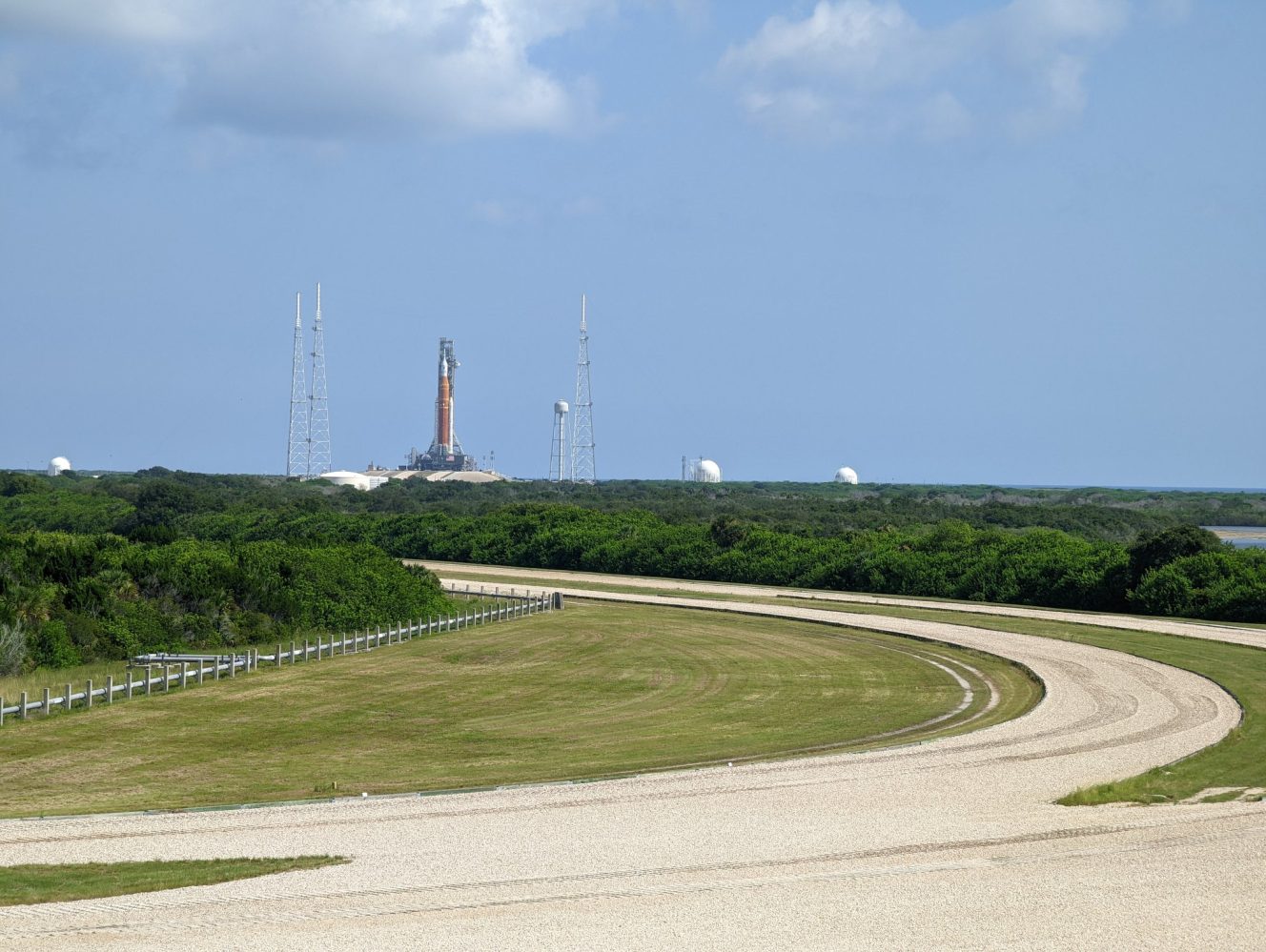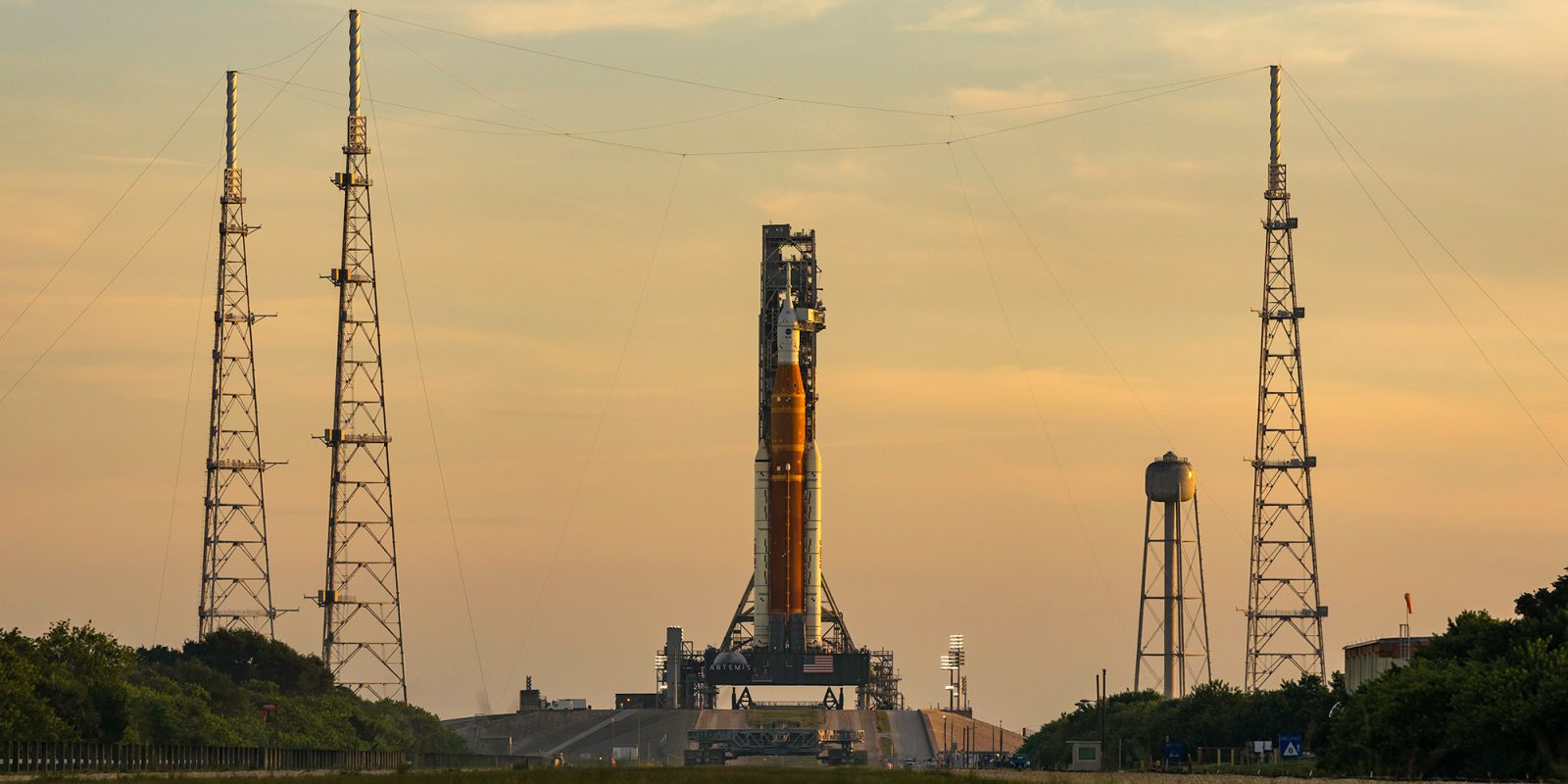Artemis 1
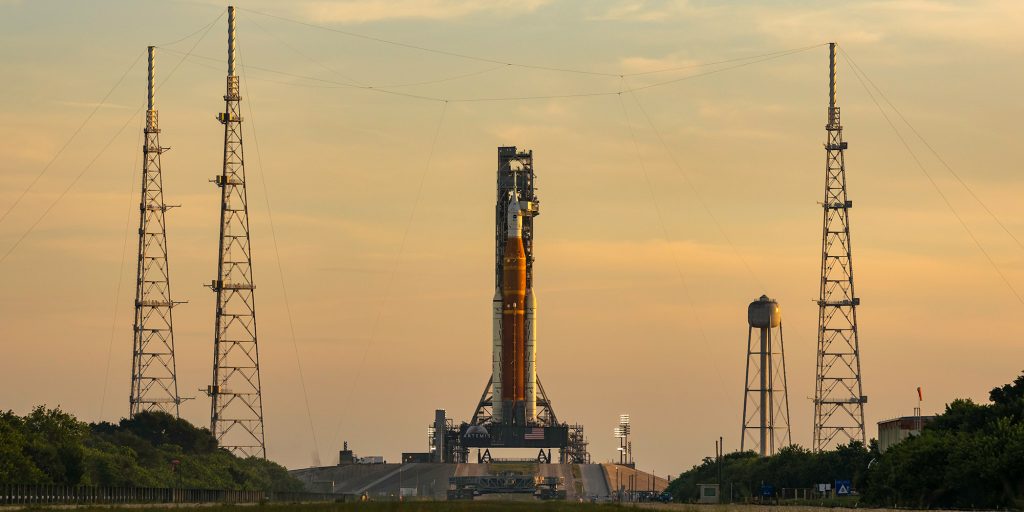
Summary
Artemis 1 is the first launch of NASA’s Space Launch System, a return of crew launch capability to the Moon since the end of the Apollo era. Artemis is the sister of Apollo in Greek mythology, and that analogy is true for the purpose of this program as well.
Launch Dates
The first launch date is August 29th with a launch window that opens at 8:33 a.m. EDT and goes for 2 hours. The next two backup dates are September 2nd and 5th (with the possibility of September 3rd and 4th)
Rocket Overview
The entire stack known as SLS, or Space Launch System, consists of five major components:
The Core Stage: Built in New Orleans at the Michoud Assembly Facility, the Core Stage of SLS is the largest component of the entire stack. It’s the orange section in the middle of the stack. At its base, it holds four RS-25 engines built by Aerojet Rocketdyne. All four of these engines have flown on various space shuttle missions but this will be their last mission. These engines even contain small components like nuts and bolts from STS-1, the first flight of the shuttle. The core stage will be the second component jettisoned in flight once its fuel is expended.
The Solid Rocket Boosters: The SRBs can be identified as the two white tubes on either side of the Core Stage bearing NASA’s iconic worm logo. The ignition of these boosters commits SLS to flight since they cannot be stopped until their fuel is expended and they are the first components jettisoned in flight. Built by Northrup Grumman in Promontory, Utah, these boosters are built in segments, which again are left overs from the shuttle program. Whereas the boosters were recovered after shuttle launches, these will not be.
The Interim Cryogenic Propulsion Stage: The ICPS is built by United Launch Alliance (ULA) at their manufacturing facility in Decatur, Alabama. The ICPS is derived from the Delta IV upper stage meaning the design is very similar to what the Delta IV uses and has been adapted to work with SLS. The “Interim” part of ICPS means that this will not be permanently used with SLS. A dedicated upper stage is currently in development. The ICPS ignites after the Core Stage is jettisoned and will send Orion all the way to the Moon.
The European Service Module: ESA’s contribution to SLS and the Artemis Program, the ESM is built by Airbus and provides power, communications and maneuvering for Orion. It stays with Orion until just before the end of the mission where it separates from the capsule to burn up in the Earth’s atmosphere.
The Orion spacecraft: Built by Lockheed Martin at facilities in New Orleans, LA and in Florida, the Orion spacecraft holds the crew for Artemis missions. For Artemis 1, Orion will not have crew but will have test dummies and other payloads for testing. After separating from the ESM, it reenters Earth’s atmosphere and splashes down in the Pacific ocean to be recovered by joint teams from the United States military, NASA and Jacob’s Engineering.
Mission objectives
First and foremost Artemis I is a test flight. The overall objective, simply put, it is to make sure everything works before humans climb aboard. Mission managers have said that they plan to push their systems harder than they would when a crew is on board to ensure a margin of safety for crew. Additionally, this flight will prove out the mission of Artemis 2. That mission will fly the same path as Artemis 1 around the Moon and return. In the interstage (the empty section between Orion and the ICPS) there are 10 CubeSats. These small satellites contain experiments for research organizations and universities.
Launch countdown
The countdown clock began on Saturday, August 27th, at 10:23 am EDT. That was when crews had their call to stations to begin launch operations. Fueling began at 1:13 am and complete by 3 hours before launch. 40 minutes before launch, the countdown will be held for 30 minutes. The final go/no-go poll will be held at L-15 minutes. If all stations report “go,” the countdown resumes at T-10 minutes. In these last minutes, all of the various systems on the vehicle undergo their final checks for launch. Ignition of the 4 RS-25 engines on the core stage occurs 6.8 seconds before liftoff. Onboard computers check to make sure the engines are running as they should. If their checks pass, ignition of the two solid rocket boosters occurs at T-0, committing SLS to flight.
Payloads
Orion isn’t the only spacecraft that is going to the Moon. Inside the launch vehicle stage adapter (that part between the Core Stage and ICPS), there are 10 CubeSats. These CubeSats will deploy at various parts of the mission, but all will be deployed beyond Earth’s orbit.
Lunar IceCube: A partnership between Morehead University, Goddard Spaceflight Center, Jet Propulsion Laboratory, and Busek, the 6U CubeSat will be looking for water ice on the lunar surface.
LunaH Map: Similar to IceCube, LunaH will be analyzing the lunar surface for hydrogen deposits. Managed by students and researchers from Arizona State, it will fly over the Moon’s poles, being able to see all of the Moon’s surface before its 60 day lifespan is up.
LunIR: Led by Lockheed Martin Space, LunIR will do what the name kind of implies, take infrared images of the Moon’s surface. The data collected by its sensors will be sent back to researchers on Earth before heading out to a parking orbit around the Sun.
OMOTENASHI: One of the cooler CubeSates being sent to the Moon, the Outstanding Moon exploration Technologies demonstrated by Nano Semi-Hard Impactor isn’t just gonna orbit the Moon, but land. Just before impact, the CubeSat will fire a small solid rocket motor and then use airbags to hopefully land softly on the lunar surface.
NEA Scout: Traveling using a solar sail, NEA Scout will head, not to the Moon, but to a near-Earth Asteroid. Its purpose is to take some photos to study its surface.
EQUULEUS: Heading out to the Earth-Moon L2 point, the same location NASA’s James Webb Space Telescope is, it will study Earth’s plasmasphere, a part of the magnetosphere.
BioSentinel: Ames Research Center will see how well single-celled yeast can repair its own DNA while exposed to radiation in space. Yeast is well understood and used in a lot of products on Earth, so it’s a good subject to understand radiation’s impact on DNA.
CuSP: Using this 6U CubeSat, the Southwest Research Institute will study the effect the Sun has on electronics. Satellites live life on the edge of damage from large solar storms, so knowing how to protect against them is important.
Team Miles: A member of the CubeQuest Challenge, it will study the use of plasma thrusters in space, because you can never have enough options for moving in space.
ArgoMoon: One of our favorites, ArgoMoon won’t be studying any planetary objects but its own ride. Sending back images of the ICPS and Orion, ArgoMoon will give a unique view of this historic mission.

